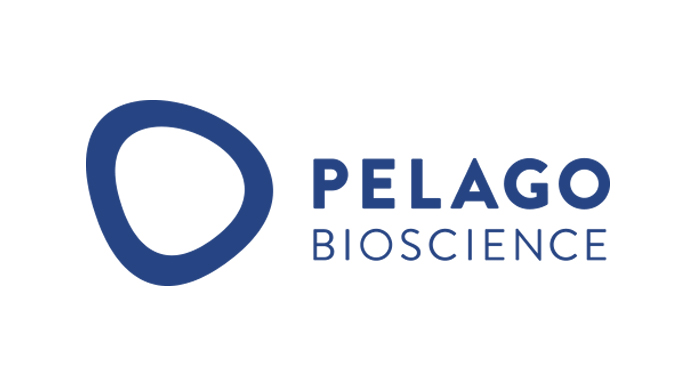Michael Dabrowski is the CEO of Pelago Bioscience, a company which stemmed from work at the Karolinska Institute and was founded to develop the patented method of determining and quantifying drug-target interactions, called the Cellular Thermal Shift Assay (CETSA).
Dabrowski is experienced in the field of drug discovery and previously worked for Novo Nordisk and AstraZeneca in multiple therapeutic areas. CETSA is a technological breakthrough invented by Professor Pär Nordlund, who founded Pelago Bioscience alongside Dabrowski and the CSO, Daniel Martinez Molina.
CETSA is a method to assess the extent to which a drug candidate finds and binds to its protein target within a cell, which is a prerequisite for successful drug development, and is relevant to all stages of drug discovery and clinical development. The technology behind CETSA is innovation which follows on from the pre-existing scientific knowledge of thermal shift assays, which are already known to quantify how well a ligand binds to a protein.
Pelago Bioscience have identified that there is a niche in the market for a method which quantifies drug-target interactions. Currently, the overall probability for clinical success of a new drug candidate is less than 10%. Pelago Bioscience aims to change this by using CETSA to allow drug developers to identify and focus on the right compounds. This will improve the quality and speed, and reduce the costs associated with, drug discovery and development. Pelago Bioscience say that the method can reduce the timeline of preclinical development by up to two years and will save drug developers a lot of money which would otherwise be spent on developing a drug where they are unsure of its ability to interact with its target.
Speaking to Innovation News Network, Dabrowski explained that CETSA has the potential to revolutionise the assessment of efficacy which is essential to drug discovery and development, but there are still challenges to overcome to commercialise the use of CETSA.
What were the biggest challenges you experienced when establishing Pelago to commercialise and develop the CETSA for use in drug discovery and diagnostics?
Drug discovery is inherently risky, extremely costly, and a successful project still takes years before it reaches the market and starts to recoup the investment made. This makes the market extremely resistant to change. So our biggest challenge is to overcome the inherently conservative nature of the scientists involved in drug discovery. As such, when we try to establish our our novel product into the market we not only have to generate a lot of benchmark data to establish its validity; but our customers would ideally like us to show that the approach actually does improve timelines, reduce costs and deliver more success . As you might guess, getting such confirmation actually would take years, so the customers need to be prepared to jump without as much proof as their conservative natures would like.
What CETSA really offers is an opportunity to test up front whether a drug candidate will ever have a chance to work in humans, meaning that it is possible to front load that risk. In many instances, projects fail in the proof of concept phase (Phase II) of clinical trials, and the majority of failures are due to lack of efficacy. Now, however, we can test whether the drug reached its intended target or not, and that it is the prerequisite for efficacy, meaning that we can offer our customers a chance to focus on the right compounds (and if it does turn out that these compounds are the wrong ones, then the project’s failure will be early in the commercialisation process, and therefore much less expensive). By focusing on the right compounds, of course, our customers can accelerate the development of the right compounds.
The main challenge for us was to convince our customers that our claims are indeed true. That is essentially where we are today but, of course, with an immensely larger track record. Indeed, we have now served all the top ten pharmaceutical companies, and so we are certainly making good progress.
Our biggest competitor is ‘business as usual’, and we don’t have an equally versatile method to benchmark ourselves against.
What support was made available to you from the Uppsala Innovation Center? Do you feel that there is a lack of support for such activities in Europe at the EU level? How would you like to see this change?
The three of us involved in the launch of Pelago were all scientists; and while I had a lot experience in Pharmaceutical R&D I was always the customer not the vendor. Similarly, Professor Nordlund who is an extremely senior academic, previously founded a drug discovery company, had some idea about the discovery process, but not of how to sell into that market. Likewise, Daniel is an amazing wizard in the lab but inexperienced when it comes to commercialisation.
When developing any new product, there are some essential primary ingredients: you need a bank account, you need a lawyer, and you need some branding. The Uppsala Innovation Center has great set-up programmes that you can follow in their incubator which we took advantage of, but it does not provide funding – rather, it provides coaching, advice, and networks (the latter of which was key). They also helped us to put together our business plan.
Then, of course, they were able to direct us towards some small grants and other funding streams – for instance, we were able to secure the equivalent of €10 000 to have a second opinion on our IP strategy, which is, of course, a key part of Pelago because we control the IP for the method.
In terms of European support, the Uppsala Innovation Center is in part funded by the Swedish innovation system, Vinnova, and the Swedish innovation system is in part funded by the EU innovation system, and so we received EU level support in a very indirect way.
We don’t have a great track record with EU non-diluted funding, but after a few years we started getting the language right for Vinnova and so now we have quite a large R&D grant to look at the feasibility of CETSA in oncology biomarker discovery and diagnostics. (this is R&D but it with the purpose of commercialising a better service).
Funding is thus available, but it can take a lot of effort to obtain. But as our product now has such a good track record it has become much easier for us to focus on our turnover and to invest back into R&D projects.
We have been cash flow positive for the last four years, and I feel or that we have now mastered the Swedish system; we have a good dialogue with Vinnova and we know what they are looking for and can answer their questions correctly. Nevertheless, there is still a sense that the administrative system and the whole application procedure at the European level – for instance Horizon 2020 are too much of a burden for a small start-up. You can liaise with agents that help you to navigate this and that has started a number of companies in its own right, which is also an indicator of just how cumbersome this process actually is.
Is it more difficult for a biotech company to spin off and scale up – compared, for instance, to a company developing information communication technologies or things like apps, for instance? How did you approach these hurdles?
We initially entered into Venture Cup. This is a national competition for start-ups from the life sciences and technology sectors, as well as companies developing apps. From the insight that we were able to gain there, I don’t necessarily feel that it is any more or less difficult for different companies in different sectors when they are starting up. Of course, I am sure every company has its own challenges as well as coming up against hurdles which exist across the board: there are data protection issues if you want to develop apps, or trade regulations if you want to import nuts from Africa which are more sustainable than European ones, and so on; each category has its own challenges.
Within the life sciences, Pelago is perhaps in a better position compared to many others because we had a product which was ready for commercialisation. The proof of concept paper was published in Science and contained a lot of data that we were able to use in the initial customer meetings demonstrating that the product works.
In the biosciences space we are a CRO, a consulting company, selling services and solutions rather than products, and so the risk we take is limited because we are getting paid for our work. Whereas if you are developing a novel therapeutic then you only get paid at certain milestone when you partner with or sell your IP to someone else. In comparison our risk is therefore more short-term.
Within the life sciences I think it is perhaps a little easier to start a CRO company than it is to start a drug discovery company. But if you compare CROs, we had the added challenge of being something new, meaning that we had to approach companies and essentially tell them that they were doing something wrong and that we could help, which is something that tends to be met with resistance in general and possibly in particular by drug discoverers. This is different to other CROs which might be extremely good at synthesis in medicinal chemistry or metabolism studies, or have an in vivo (or maybe even a clinical) trial unit, etc. However, they also have a lot of competitors. As such, I think it is clear that no matter what the company is or the space in which they are working, there are challenges.
Although the fact that we have been self-financing for the last 5 years has been a great advantage we are now entering a new phase. Should we expand rapidly in anticipation of a much larger market or cautiously in line with profit growth? We believe that our CETSA IP has broad applicability outside our current pre-clinical drug discovery market, such as agro-chemistry and clinical diagnostics. These are both very large markets but venturing into them needs a significant commitment of both resources and finance. And it is here where we feel more guidance is needed, to take us from being a successful spin out to a major player in our market.







